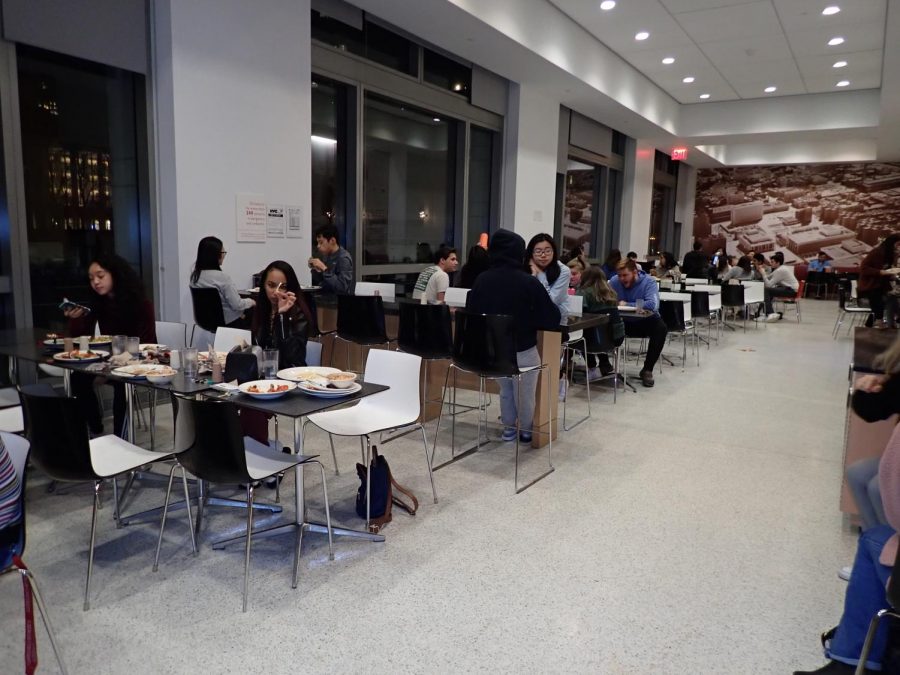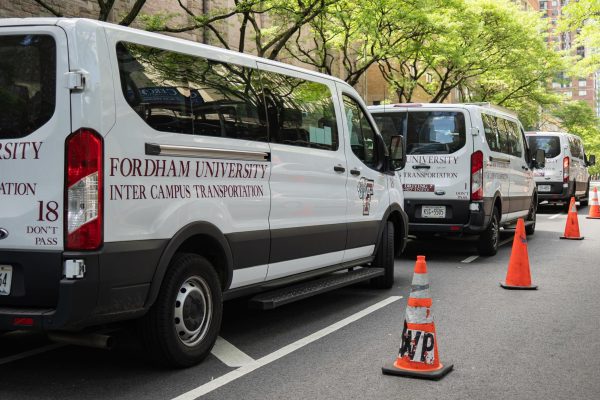Declining Balance, Diminishing Returns: Comparing LC and RH Meal Plans
Freshman residents in McKeon Hall are required to buy a meal plan. The default plan for Lincoln Center students, appetizingly titled “Block 225,” is priced at $3210, and includes 225 meal swipes and $400 of declining balance dollars (DCB). There are four other meal plan options, but none offer fewer than 200 swipes. These swipes are only accepted at the Community Dining Room, whereas DCB can be used at several campus dining options such as the Ram Cafe, Argo Tea and the Schmeltzer Dining Room.
Rose Hill residents are also required to have meal plans, with the Block 225 plan priced at $2810, including 225 meal swipes and $350 of DCB. While Rose Hill’s Block 225 plan offers less DCB than the Lincoln Center equivalent, it costs significantly less. Meal swipes, in addition to being used at The Marketplace (Rose Hill’s all-you-can-eat dining hall), can be used at specific dining locations such as Urban Kitchen in place of DCB.
This option is not available at any Lincoln Center dining options, which minimizes the flexibility of a meal plan at Lincoln Center. This meal swipe/DCB exchange program is also not available to Lincoln Center students with meal plans visiting the Rose Hill campus, forcing them to use their DCB.
Kathleen Kye, Fordham College at Lincoln Center (FCLC) ’22, said that she would have preferred choosing between a certain number of swipes in her meal plan, instead of having a set number. “Two hundred is too much in my opinion,” she said. “And I would want the option to cancel.”
Kye explained that she was one of few freshmen that used all of her swipes last semester, but most freshmen used up their DCB and were left with meal swipes that would not carry over into the next semester.
The latter was the case with Jamie Ira, FCLC ’22, who said she would eat at the Ram Cafe over the Dining Hall “out of convenience,” or when she couldn’t “stomach the Dining Hall options at the time.” She cited the Ram Cafe’s superior freshness and taste.
Deming Yaun, the Fordham University dining contact, explained that there are “specialty exchange menus” eligible for meal swipe purchase instead of DCB or cash. For example, at Rose Hill’s Urban Kitchen, a Rose Hill student can either buy a cheeseburger for $5.19 or use a meal swipe to get a burger, fries and a medium-sized drink.
Lincoln Center students with meal plans do not have access to this option, because it was “not a part of the cost equation when meal plans were started at Lincoln Center.” He cited financial and timing issues in the rollout of the exchange program at Rose Hill.
Yaun said, however, that dining services is “very close” to offering the exchange program to Lincoln Center students in the 2019-20 school year.
“It was rushed at Rose Hill,” Yaun said, emphasizing why it has taken so long for the program, which has been available at Rose Hill for more than five years, to reach Lincoln Center students.
With regard to how such a program would affect the prices of meal plans, Yaun said that dining services is “conscious” of implementing the program without overinflating the price of meal plans.
The university, however, is still in negotiations with food service providers over the possibility of keeping meal plan prices next year at roughly the same price as what they are this year, stressing the importance of customer satisfaction during the discussions of introducing the program in relation to cost.
Students at Lincoln Center voiced their support for the implementation of a similar meal swipe exchange program. Such a plan would “drastically increase the value of the meal plan for me,” Ira said. “I think it would be fair since it costs as much as it does.”






